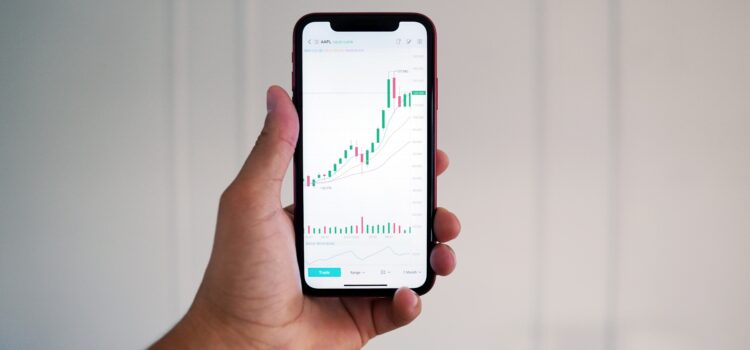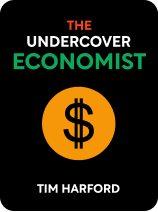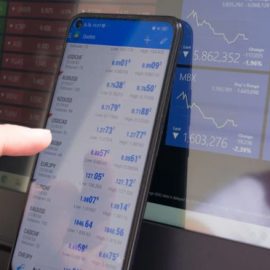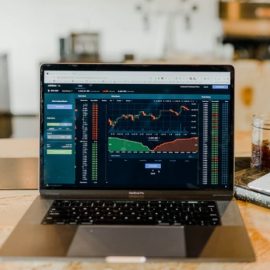

This article is an excerpt from the Shortform book guide to "The Undercover Economist" by Tim Harford. Shortform has the world's best summaries and analyses of books you should be reading.
Like this article? Sign up for a free trial here .
How does the stock market economy work? Why are so many people deterring from buying shares?
The stock economy is a sector of the economy that is shrouded in secrecy. Complex jargon scares potential investors who don’t have a background in economics or finance.
This article will help to lift that curtain. It will explain how stock prices are valued and why companies hire economists to help them play the stock market.
How Do Investors Make Money in the Stock Market?
It’s difficult to make more money than an average investor in the market. This is because, if you’re following the law (and not trading off of insider information), everyone is working with the same information. A report that says that stock prices will go up tomorrow, for example, will make stock prices go up today because people will buy them expecting them to go up tomorrow. When investors buy more of a company’s stock than other investors sell, the stock price goes up.
Future Value
Economists are hired by investment firms or individuals because they are generally right about the market’s direction a little bit more often than they are wrong. This is because they understand the future of markets a little bit better than the average person.
Stock prices are the representation of what the market thinks a company will earn in the future. Investors and economists are attempting to judge not the current profitability of a company, but what the current numbers and the state of the economy mean for a company’s future profitability.
When you buy a stock, you’re buying a small part of the company. Theoretically, as a shareholder, you get back part of a company’s profits. In practice, though, shares are more about prospects than profits. When a company makes a profit, it generally reinvests that money into growing its business. Companies spend money on development of a new product or advertising of an existing one. As a shareholder in a company, you’re betting that they’ll have more success with their reinvestments and general future growth than the market assumes.
Running With the Crowd
As the above example showed, when playing in the stock economy it’s generally safest to run with the crowd. If a lot of people think a company is going to be successful, buy stock in it, because the stock price is likely to go up. This theory, though, also means that the stock market makes a lot of mistakes.
Often, investors can get an entire industry wrong. The dot com bubble of the early 2000s happened because investors started investing a lot of money in every internet company, no matter how unsuccessful they looked. At the height of the bubble, the market was pricing internet companies as if they would grow more quickly in the future than any group of companies ever.
Some technology companies, like Microsoft, did have good fundamentals and withstood the bubble better than many. But lots of internet companies didn’t have a clear growth plan, and so, after they couldn’t report growth, came crashing back down to earth. Investors ran with the crowd upwards until the argument for historic growth became untenable. Then, they ran with the crowd on the way down. This sort of groupthink can lead to wild swings in the market.
Price/Earnings Ratio
A good way to value a company is to look at the ratio of the price of the stock to the earnings of a company. Historically, the total price to earnings ratio has hung around 16 to one. Before making a long-term investment in a company, always take a look at the company’s fundamentals. But in particular, if the company’s stock price is more than 16 times greater than its earnings, take an even closer look. This means that the market thinks the company will grow quickly. It also means that it’s due for a crash. Again, in the dot com bubble, the total price to earnings ratio of internet companies skyrocketed past 16 to one.
Competition
The shares of a company should only rise if the market has good reason to believe that the future profits of a company will be high. This doesn’t have much to do with wider changes in the global economy. We might assume that during the railroad boom, if an investor got in at the ground floor with a successful rail company, they’d make huge dividends. But even the best rail companies only reaped a modest dividend, while the less successful went bankrupt because competition between rail companies kept profits for all of them modest.
New technology can also change the way an industry competes and affect stock prices. The internet, for example, devalued portions of the music industry that relied on album sales from brick and mortar stores. The internet also enabled new music companies to rise and reap the benefits of internet sales.
Amazon
The company Amazon is a good case study for this. Its original business model was to use the internet to sell books. It provided a service using a new technology. The company was overvalued at the height of the dot com bubble, selling for almost $100 per share. It crashed back down to around $10 per share and has since climbed back to about $40 per share. The $40 per share price, though, still suggests that investors believe the company will grow more quickly than its numbers indicate. It’s possible that once again, investors going with the crowd has driven the price of Amazon stock up beyond where it should be priced. The fundamentals of the company will ultimately determine its success, but in the short term, going with the crowd on the way up can still make an investor money.
(Shortform note: This analysis is based on market conditions at the time The Undercover Economist was published, in 2005. In late 2020, Amazon stock was trading at around $3,100 per share. If you had invested $4,000 in Amazon when The Undercover Economist was published, for 100 shares at $40 per share, and held your position, you’d have about $310,000 worth of Amazon stock.)

———End of Preview———
Like what you just read? Read the rest of the world's best book summary and analysis of Tim Harford's "The Undercover Economist" at Shortform .
Here's what you'll find in our full The Undercover Economist summary :
- How to think like an economist
- How to use principles like scarcity, price targeting, the stock market, and game theory to make better decisions every day
- Why the economy is mostly about people, not complex math, graphs, or jargon






